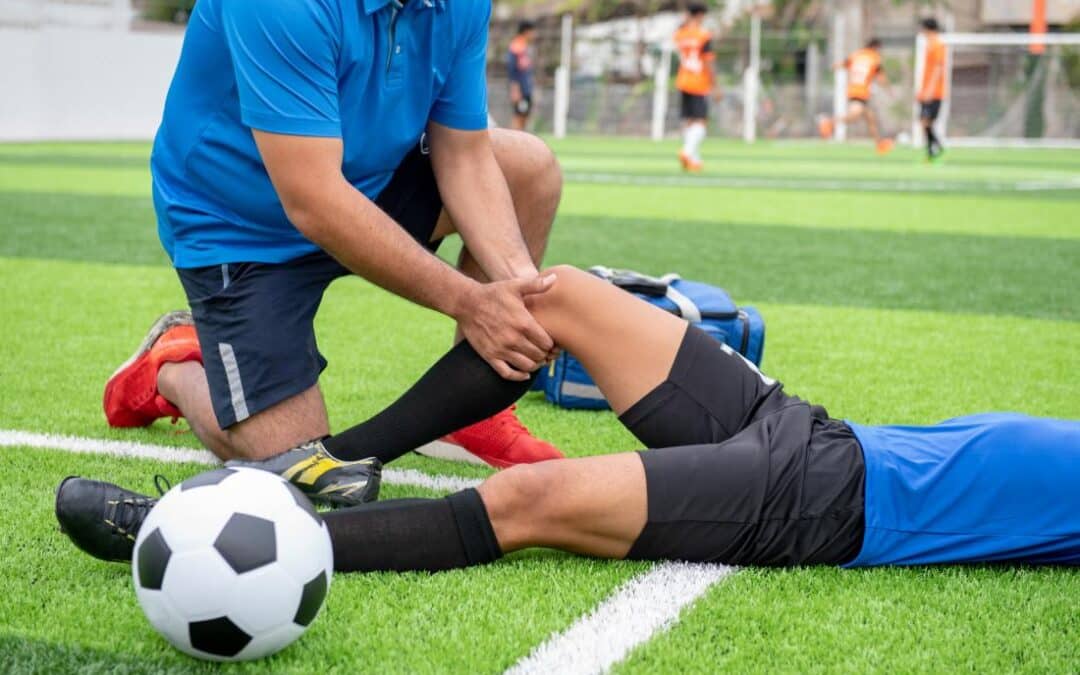The media loves to report suspected and confirmed anterior cruciate ligament (ACL) injuries. Suffering an ACL tear means you’re usually sidelined for 6-18 months. Yes, there are athletes who defy the odds and come back sooner and others who suffer setbacks that take longer to return, but that’s not what we are here to discuss today. I am writing this blog to educate you on how you can help your patients, athletes, or yourselves stay off this report. In other words, what DECREASES your potential risk of suffering an ACL injury?
Before we get into what exercises to do, let’s do a quick overview of how this injury typically occurs. This injury is commonly sustained one of two ways: 1) Someone planted and pivoted and felt or heard a “pop” while trying to change directions without contact or 2) Contact and trauma to the knee area when foot was in contact with the ground. Contact ACL injuries occur about 30% of the time while the other 70% are non-contact! How can we help lower that number?!
According to a systematic review by the International Journal of Sports Physical Therapy there are intrinsic and extrinsic risk factors. Here are some risk factors that we can address
Risk factor 1 –Thin and narrow ACL.
Risk factor 2 – Weakness in hip external rotation and abduction. It is not enough to solely strengthen the muscles that perform these movements.
Risk factor 3 – Hamstring Strength. As the hamstring fatigues, the muscle does not contract as quickly and puts the ACL at higher risk for injury.
Risk Factor 4 – Previously tearing an ACL.
Now that we’ve gone over the risk factors lets discuss the how we can get in front of these issues. Note: playing sports comes with adherent risk. There is no outright solution to preventing injuries from occurring. What we can do is program our workouts to align with the data that places our athletes a lower risk of experiences a non-contact ACL injury or all non-contact injuries for that matter.
Addressing risk factor 1 – Through progressive and appropriate strength gains and increased fitness levels, this can increase the width and thickness of the ACL. Single limb strength and proper plyometric exercise has also been shown to contribute to less injuries.
Addressing risk factors 2 & 3 – Strengthening these movements and muscles dynamically and eccentrically are shown to be more beneficial to accomplish injury risk reduction. As far as hamstring strength, the same principles apply, dynamic and eccentric strength. Teach the muscle to fire fast and don’t be afraid to be sport specific!
Addressing Risk factor 4 – Waiting at least 9 months to return to competition after suffering a tear. Passing and completing a physical test before graduating to non-restricted return to competition. A great summary of those tests can be found here https://www.learn.physio/p/learn-physio-blog-9. When healthy and able, the earlier an ACL program is implemented in someone’s career, the less likely they are to sustain an ACL tear.
Bottom line, we have all of this data, we know the risk factors, and now what? Start with an ACL risk reduction program or as others would call it, an ACL injury prevention program. If that option isn’t available, look for a quality off-season program. Here are some considerations when choosing an off-season strength and conditioning program.
Start is at an earlier age and talk about the intent- Neuromuscular training at a younger age shows to have better long term outcomes when trying to reduce ACL injuries. Proper cueing and feedback designed to help their biomechanics and movement efficiency.
Technique and compliance – A program is only as good as the athlete execution and technique of the exercises asked of them to do. If an athlete doesn’t consistently do what is asked of them, they will not get the maximum benefits of the program. Bad mechanics = bad outcomes.
Variety and dosage – an ACL injury reduction program should be around 25 minutes long and performed several times per week. The exercises included should consist of neuromuscular training, plyometrics, and double and single limb strength training.
As a professional strength coach with a sports medicine background, all facets of the sports world can agree the health and safety of our athletes should be and is the number one priority. Starting February 27th, we will offer a class for high school athletes that can help address these concerns and reduce their risk factors; we also offer an ongoing class for kids 8-13 for more information you message us on facebook or email alan.millerspt@gmail.com. Let’s continue to educate our athletes and parents and work together to help reduce the number of non-contact ACL injuries and all other non-contact injuries in our community.
Alan Miller, ATC, LAT, CSCS
Owner of Core Performance Academy
Father and husband
“Be Healthy, be durable”

